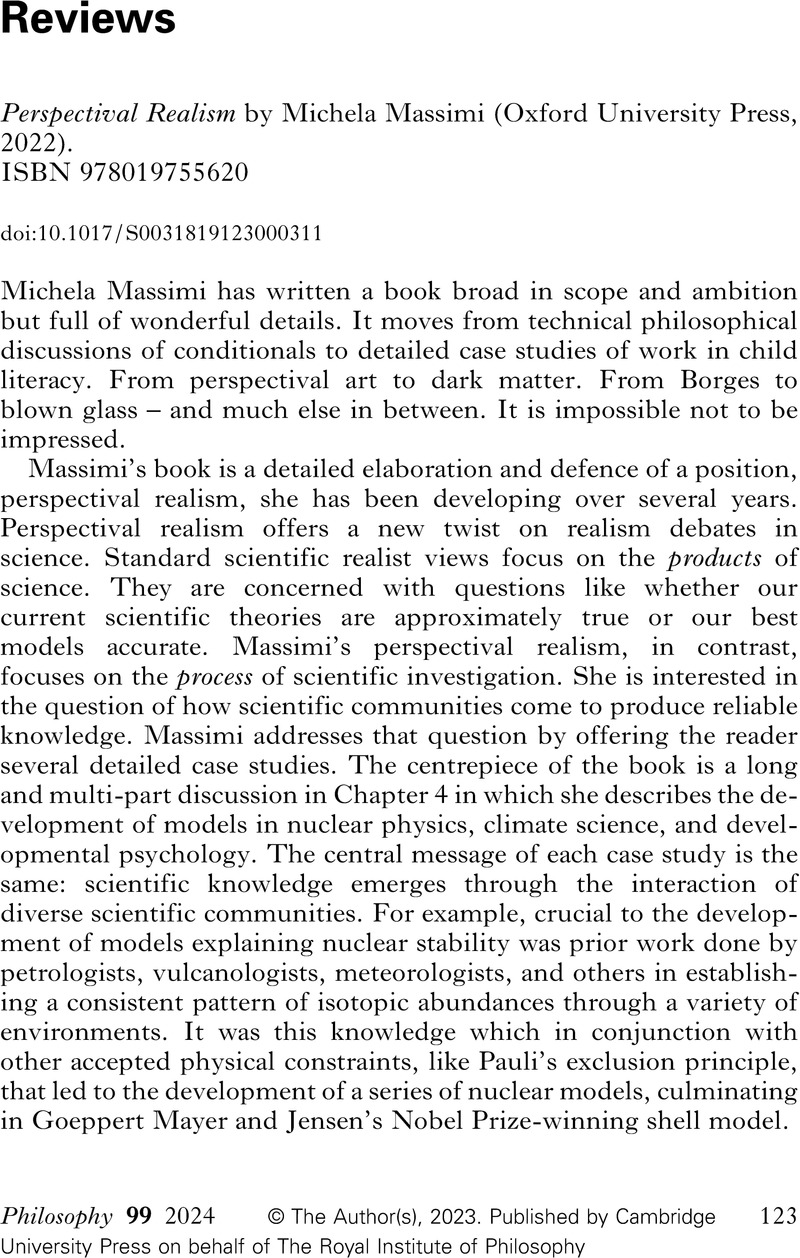No CrossRef data available.
Article contents
Perspectival Realism by Michela Massimi (Oxford University Press, 2022). ISBN 978019755620
Review products
Perspectival Realism by Michela Massimi (Oxford University Press, 2022). ISBN 978019755620
Published online by Cambridge University Press: 31 October 2023
Abstract
An abstract is not available for this content so a preview has been provided. Please use the Get access link above for information on how to access this content.

Information
- Type
- Review
- Information
- Copyright
- Copyright © The Author(s), 2023. Published by Cambridge University Press on behalf of The Royal Institute of Philosophy
References
1 Many thanks to Michela Massimi for reading a draft of this review and correcting mistakes both large and small. Any remaining errors are, of course, entirely my own.


